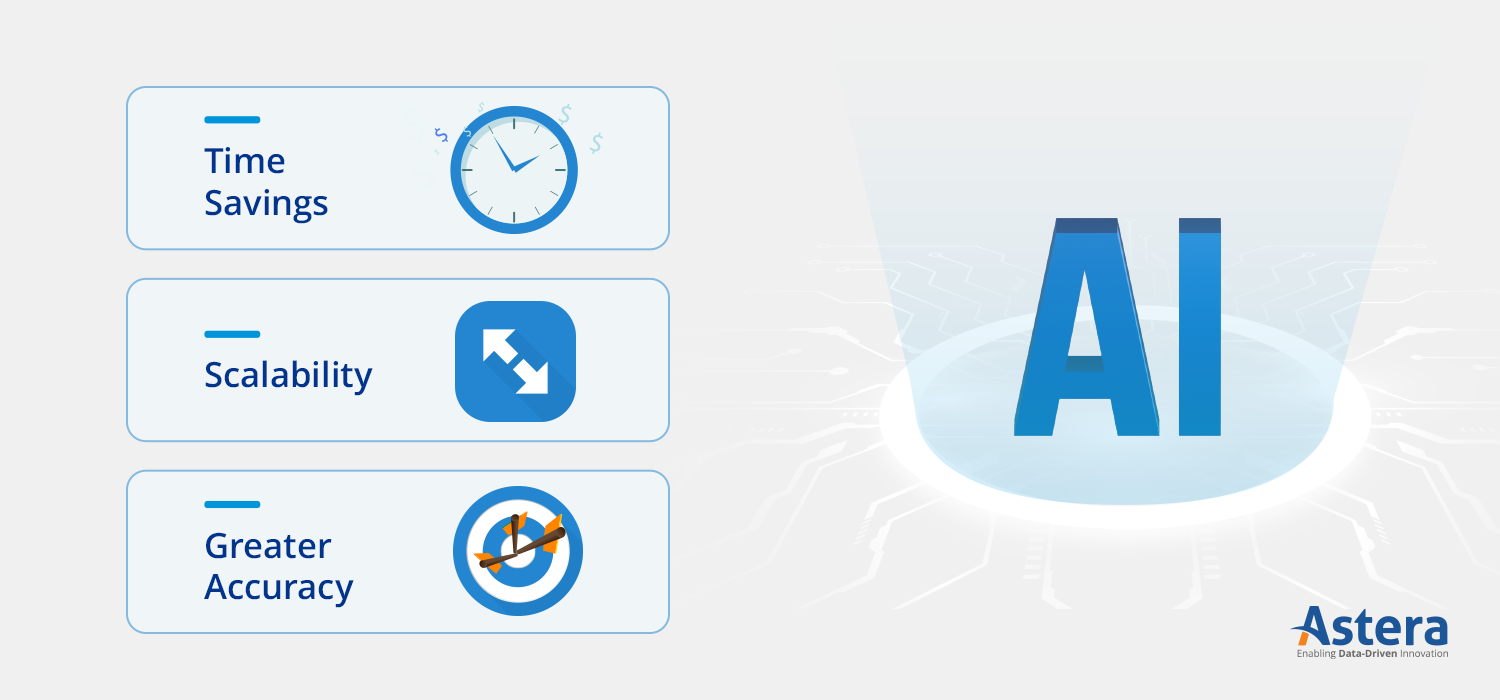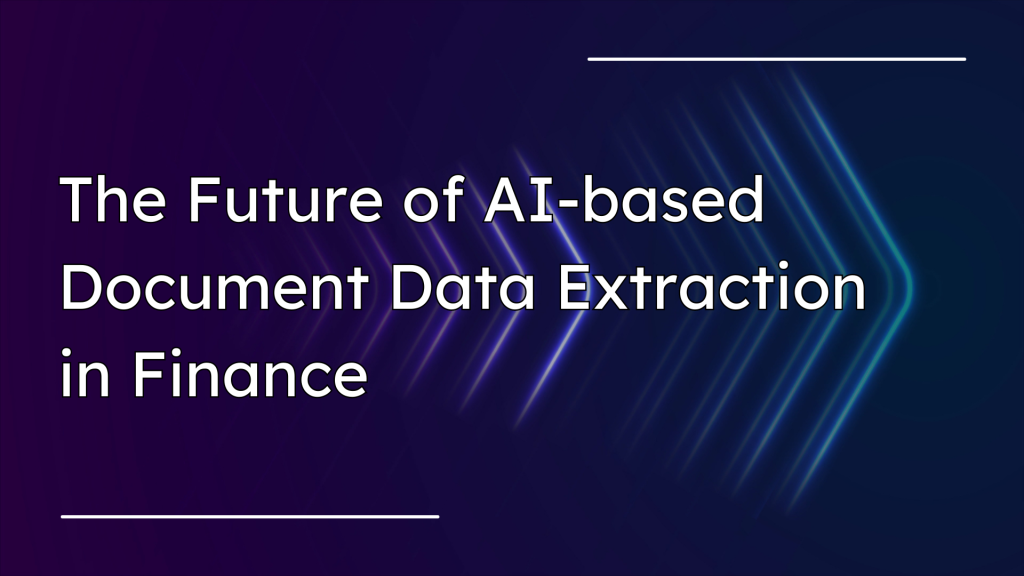According to Allied Market Research, the global data extraction market is set to increase from $2.14 billion in 2019 to $4.9 billion in 2027. Data extraction is a vital part of an effective data management strategy. As such, AI-based document processing is becoming increasingly valuable for finance companies looking to streamline their financial data extraction processes and stay ahead of the competition.
What is Financial Data Extraction?
Financial data extraction is the process of retrieving and collecting information, both structured and unstructured, from documents commonly used in the finance industry. These documents include:
- Receipts
- Bank statements
- Tax forms
- Invoices
- Loan agreements forms.
The goal is to make sense of the information contained in these documents and enable businesses to use it for various purposes, such as fraud detection, conducting financial analysis and risk assessment, budgeting and planning, etc.
How Does Financial Data Extraction Work?
There are two approaches to extracting data from financial documents: the manual method and the automated method.
Manual Financial Data Extraction
Extracting financial data manually requires people to read, extract, and enter data points into spreadsheets and databases – one at a time. This method was the default way of extracting data from financial documents for a long time.
While suitable for a small volume of financial documents, this approach is inefficient at scale. indicates that employees can spend a quarter of their workweek on repetitive tasks like retrieving and gathering information from receipts, invoices, statements, etc. Larger institutions like banks and hedge funds would need hundreds of data entry specialists to process all of their paperwork manually.
In another study, BMC concluded that manual extraction can be up to 40% inaccurate. Consequently, this method not only consumes a significant amount of time but also introduces errors, which are otherwise avoidable. Clearly, there is a need for a more efficient and accurate method to extract financial data.
AI-powered Automated Financial Data Extraction
AI-based data extraction in finance involves automatically capturing data from a variety of unstructured financial documents and converting it into a structured format.
The entire process of extracting financial data can be efficiently streamlined with modern financial data extraction software which are powered by AI and automation. Analysts are only required to upload a document to the software, configure a template, and the tool will automatically extract data and load it to a target database.
Challenges of AI-based Document Data Extraction in Finance & How to Overcome Them
Financial firms looking to automate data extraction should consider some common challenges. Instead of being discouraged, these challenges are an opportunity to utilize the power of financial data extraction software to their fullest:
- Financial institutions’ complex legacy systems are not compatible with every AI-based data extraction solution, requiring significant investment in IT infrastructure. By investing in a financial data extraction tool that offers end-to-end data management capabilities, companies can address this problem as well as modernize their outdated data infrastructure.
- Financial institutions handle sensitive data, including personally identifiable information, which presents data privacy and security concerns. It’s important to select AI-based financial data extraction systems with robust security features, like data encryption.
- Data sources may contain missing, incomplete, or inconsistent information, leading to inaccuracies in extraction. However, some software provide dedicated data quality features to clean data before extraction.
- Automated extraction processes may require human intervention for validating extracted data, especially in cases of uncertainty or ambiguity. Tools like Astera have automatic checks based on custom conditions that alert users whenever it encounters errors.
Why AI-based Financial Data Extraction Software Are Becoming Increasingly Important

When it comes to finance, accurate data is the name of the game. With all the rules and regulations out there, financial reporting mistakes can lead to some serious trouble, such as legal issues, and even damaged reputations. Reporting errors can also cause huge financial losses.
Here’s how AI-powered financial data extraction software helps financial firms improve their data-driven initiatives and operational efficiency:
- Higher accuracy: Automated tools are highly accurate. Their accuracy directly translates to more confident financial forecasts and data-driven decisions.
- Pre-emptive correction: Financial data extraction tools can detect data quality issues in real-time. Verifying records during the process is 10 times cheaper than fixing errors afterward. These automated tools contain custom data checks to identify all kinds of mistakes.
- Improved efficiency: How does saving up to 15x processing time per document sound like? That’s exactly how fast a capable financial data extraction software is compared to manual entry. This efficiency is achieved through a combination of smart information retrieval, automation, and AI.
- Increased productivity: When firms save time with paperwork, they have more resources for higher value-added work. It also boosts the morale of analysts and helps increase the variety and the scope of their work.
- Regulatory compliance: A single non-compliance event can cause a loss of $5.87m, in addition to reputational damage. As a by-product of improved accuracy, enhanced compliance with regulatory standards provides both financial and non-monetary benefits.
Choosing the Best Financial Data Extraction Software for Your Organization
The financial sector relies heavily on accurate and timely data to make informed decisions, manage risk, and comply with regulatory requirements. As such, it is important to have the right tools and solutions at hand. However, selecting the right tool can quickly become an arduous endeavor given the availability of a vast amount of financial data extraction software. The key is to prioritize business requirements and find the best fit. Here are some factors financial firms should consider:
- Data Format Compatibility: Ensure that the software supports extraction from a wide range of finance-related data sources, such as invoices, tax forms, and income statements.
- Ease of Integration: Choose software that seamlessly integrates with your existing legacy systems, databases, and analytics platforms. Not only that, but the tool should also be compatible with financial systems, including accounting software, portfolio management systems, etc. Some tools provide native connectivity to legacy systems, such as COBOL, as well as the ability to integrate the extracted data into data pipelines connected to cloud data warehouses.
- Accuracy and Reliability: Data quality and reliability are non-negotiable, especially in the finance sector. Evaluate the accuracy and reliability of the results produced by the software. Look for features such as data validation, error handling, and quality assurance mechanisms to ensure the integrity of extracted financial data.
- Customization and Flexibility: Choose financial data extraction software that offers flexibility and customization options to tailor workflows according to your specific requirements. Features like customizable extraction rules, scripting capabilities, and API access can enhance flexibility. Software solutions like Astera provide both template-based and automated financial data extraction capabilities.
- Ease of Use and User Interface: Consider the usability and user-friendliness of the software’s interface, as well as the intuitiveness of its workflow design. No-code tools have features like drag-and-drop interfaces, visual mapping tools, and interactive dashboards that make financial data extraction a breeze.
- Vendor Reputation and Support: Research the reputation and track record of the software vendor in the data extraction domain. Consider factors such as pricing, customer reviews, and the availability of technical support and training resources before committing.
- Cost and Licensing: Evaluate the total cost of ownership, including upfront costs, licensing fees, maintenance, and support expenses. Your assessment should also include the cost of switching to another vendor as it’s common to witness businesses becoming the victims of vendor lock-in.
AI-Based Financial Data Extraction Use Cases in the Finance Industry
Invoicing
One crucial domain where AI-powered financial data extraction can truly shine is invoice processing. Invoices can be incredibly intricate documents, laden with a wealth of information to process, such as item descriptions, quantities, pricing, taxes, and more.
Extracting this information manually can quickly become a painstaking and error-prone process. However, AI-powered financial data extraction solutions can automatically extract the relevant key-value pairs from invoices, providing a seamless and efficient processing experience.
Accounting
Accounting is another sphere where AI-powered financialdata extraction can be a real game-changer. In the accounting process, financial statements and other documents need to be scrutinized to identify pertinent data points like revenues, expenses, and assets.
With the unparalleled precision and speed of automated financial data extraction software, business users can seamlessly extract essential information from various documents, including receipts, credit memos, deposit slips, etc., revolutionizing accounting operations.
Tax reporting
Financial data extraction software is invaluable in tax reporting. Tracking receipts and compiling vast amounts of financial data, such as revenue, expenses, and assets, and reporting them to tax authorities is a formidable challenge that organizations face.
AI-powered financial data extraction software simplifies data retrieval from these documents. Users have the flexibility toextract only the required data points and load it to relevant data pipelines, minimizing the time and effort required for tax reporting.
The Promising Horizon of AI-based Financial Data Extraction

AI-based financial data extraction is the way forward for companies in the finance industry. The approach offers a new level of adaptability and customization, making it the ideal way for companies seeking to streamline document management processes, improve data quality, unlock higher-level tasks, and free up valuable resources.
The benefits are clear—from enhancing loan processing to streamlining invoice processing and beyond, there is no end to the transformative power of this technology, especially in the field of finance, where data quality matters a lot. In a nutshell, the future of AI-based financial data extraction in finance looks promising.
Simplify Financial Data Extraction with Astera

Astera’s Unstructured Data Extraction Solution is a powerful AI-based tool that simplifies the complex task of extracting data from a wide range of financial documents. With its intuitive and no-code interface, businesses can easily automate their data extraction processes and eliminate the need for manual data entry.
From invoices and receipts to financial statements and tax documents, it can accurately capture data from any unstructured document and convert it into a structured format. This results in reduced errors and increased accuracy, leading to better decision-making.
With Astera, your financial institution will streamline the document management processes, save time and money, and stay ahead of the competition. Try it out with a free 14 day trial or talk to our sales team about your requirements.






